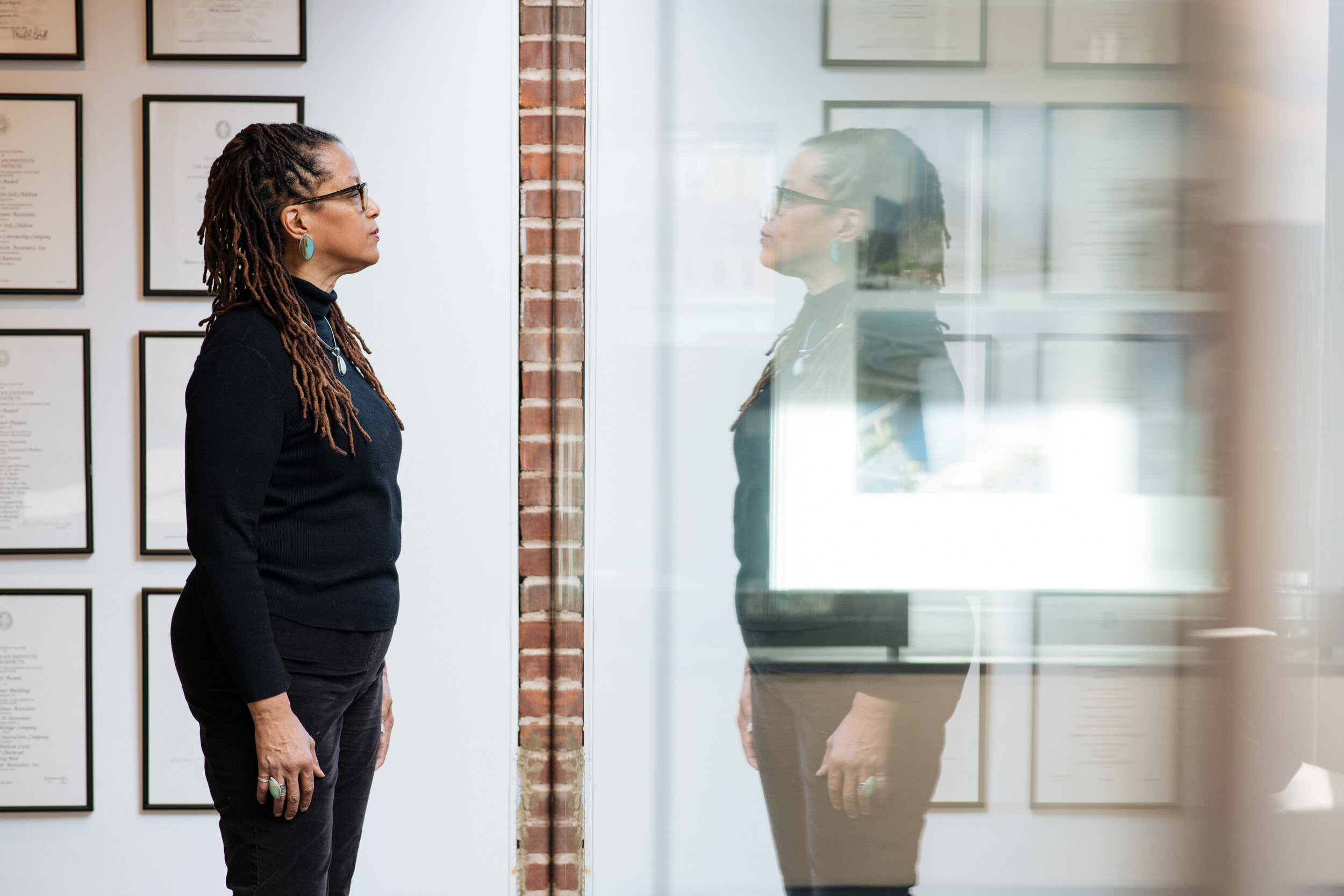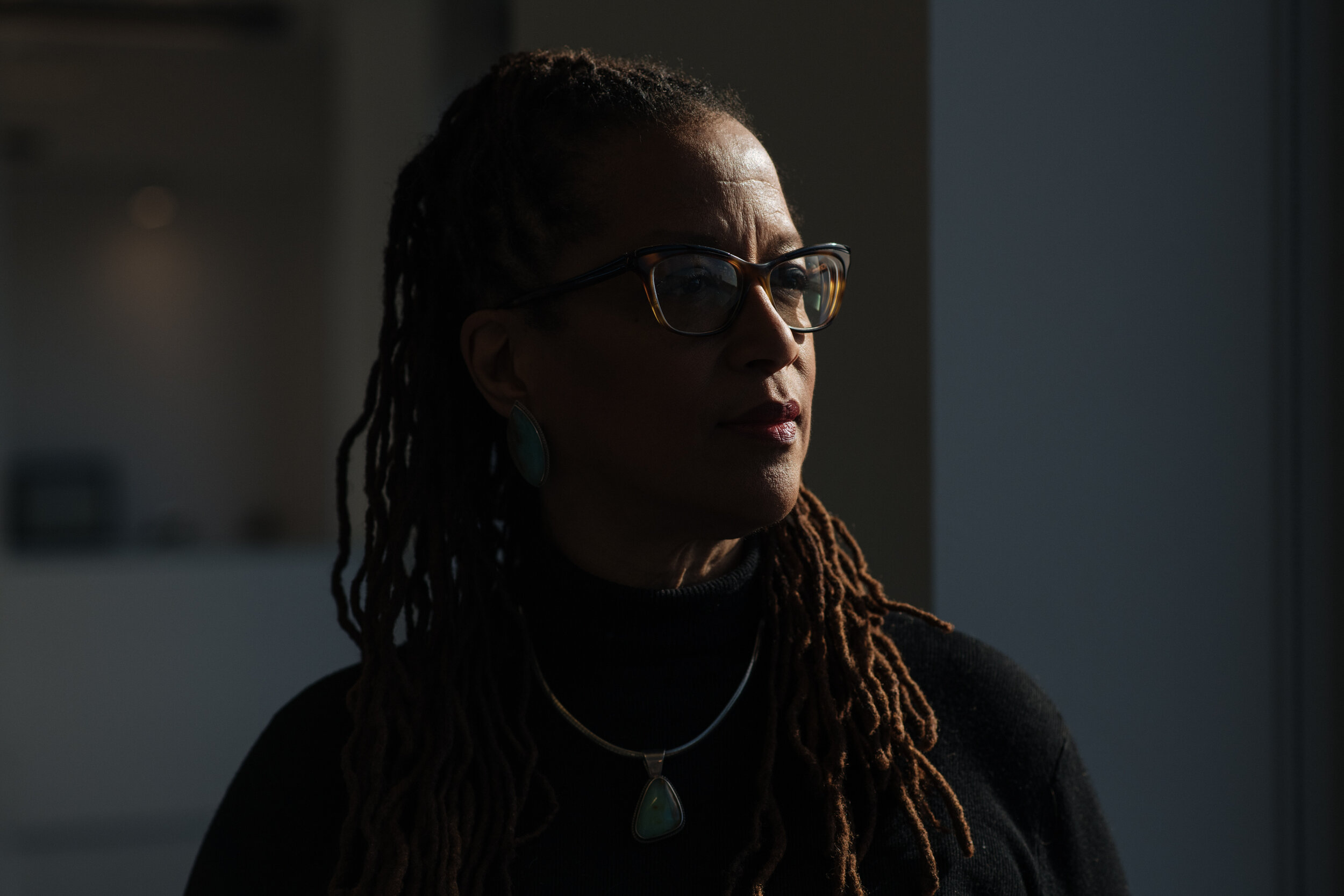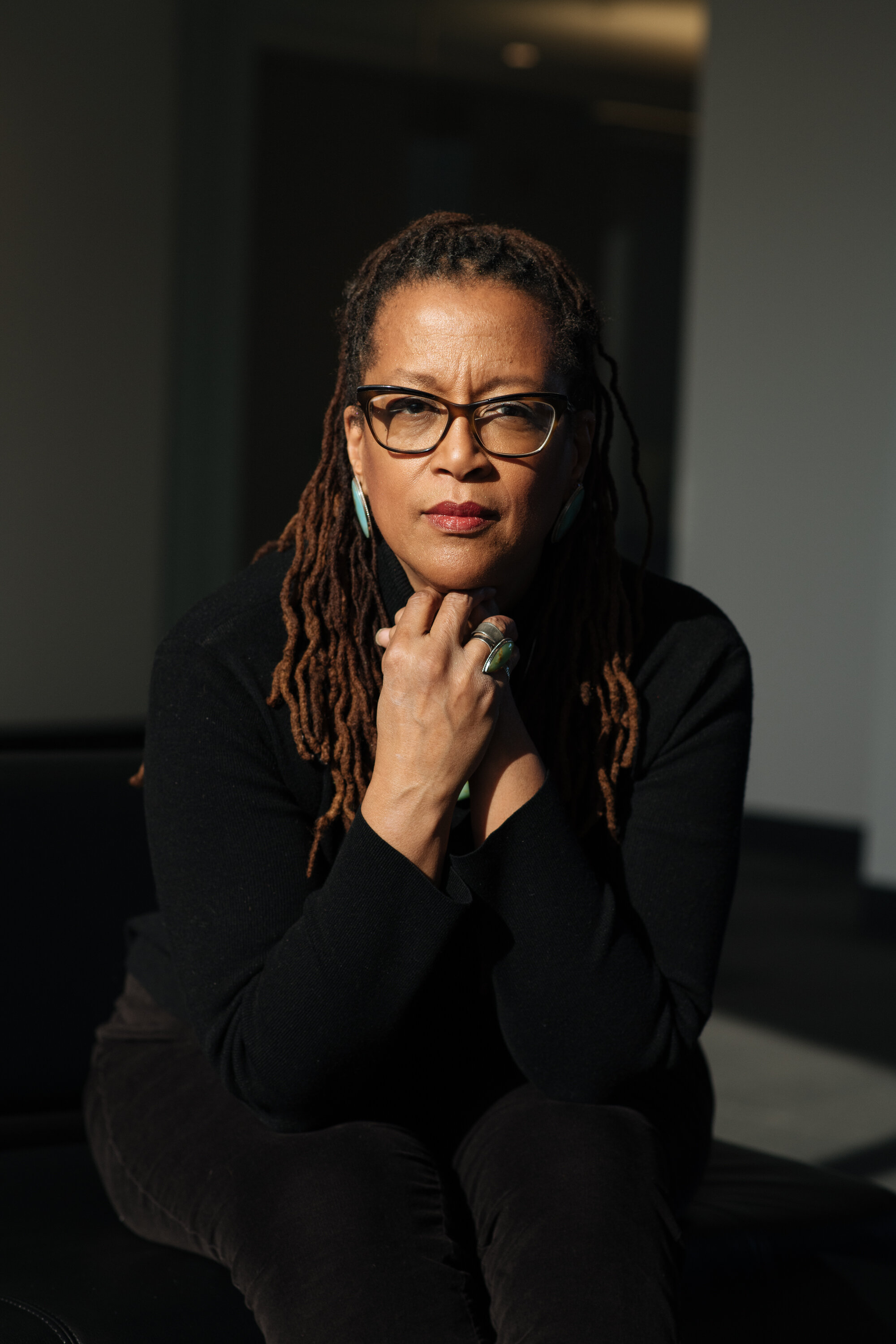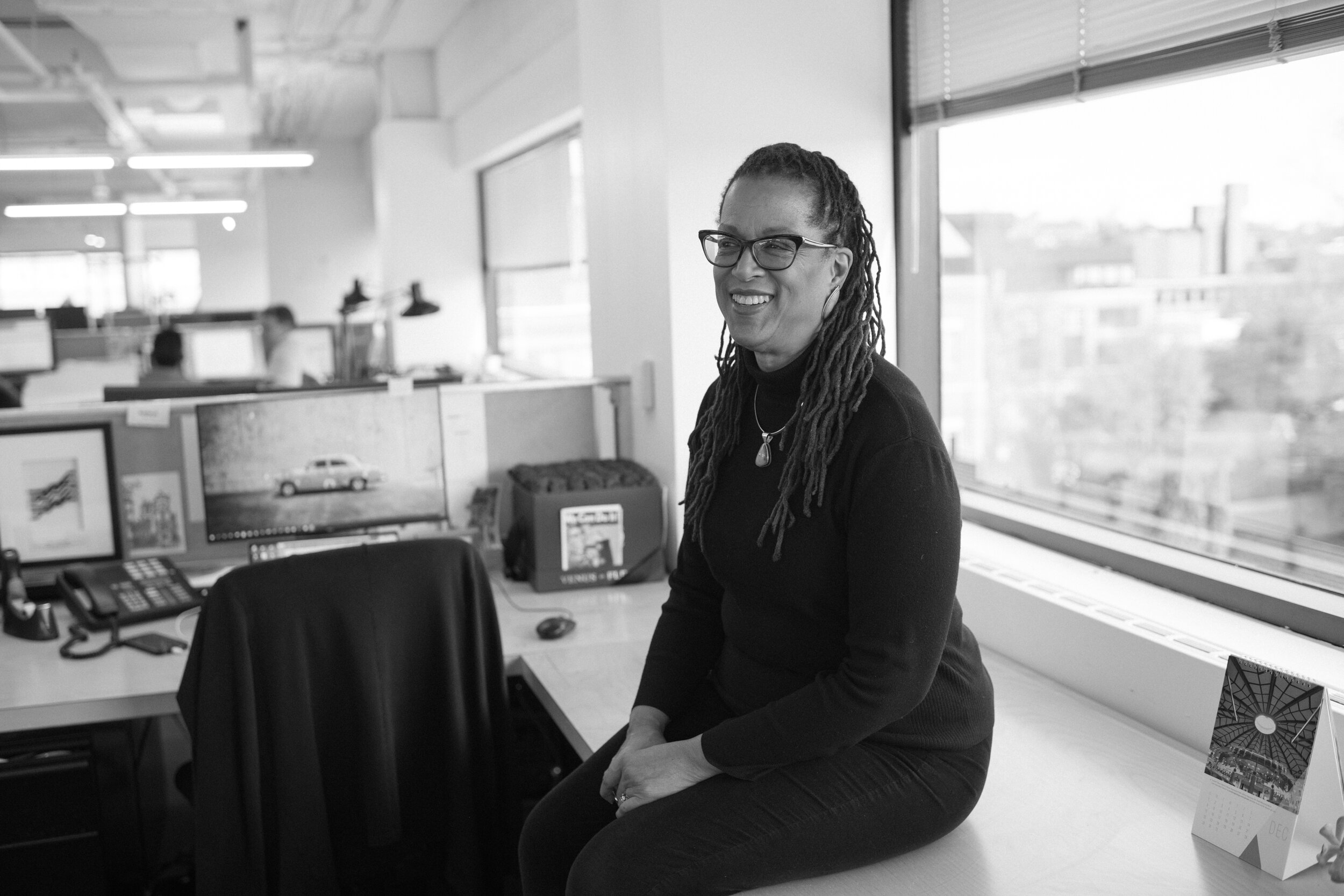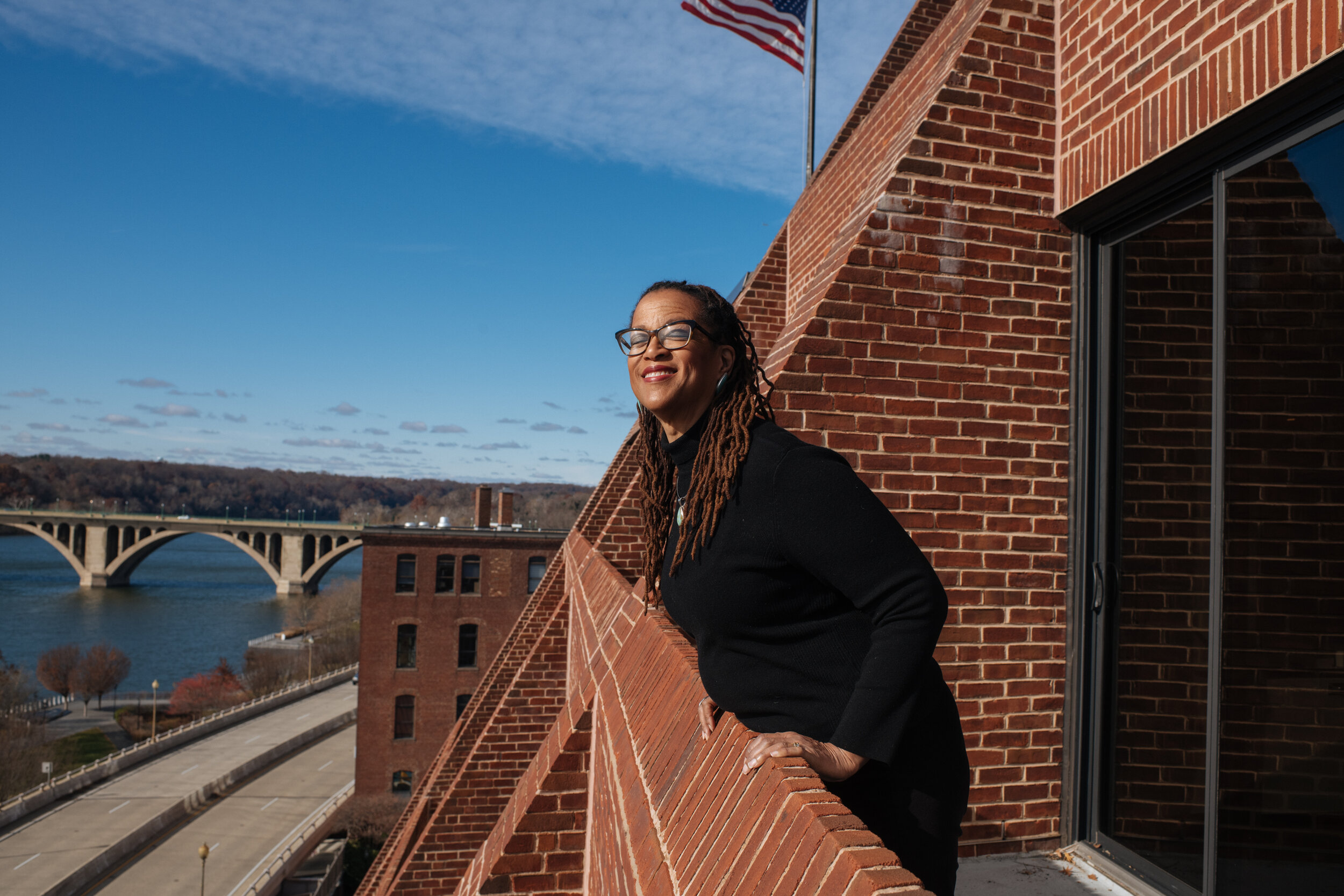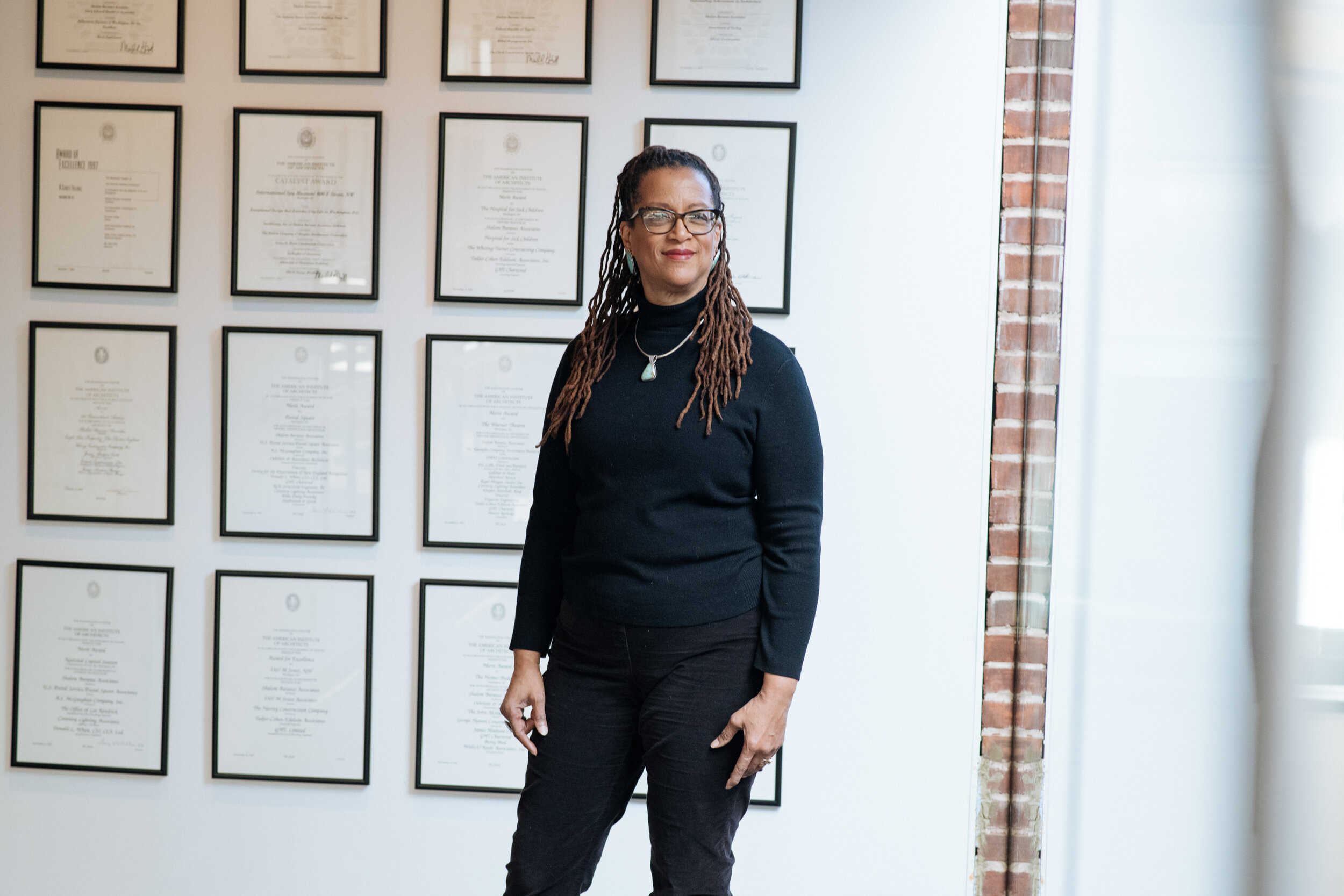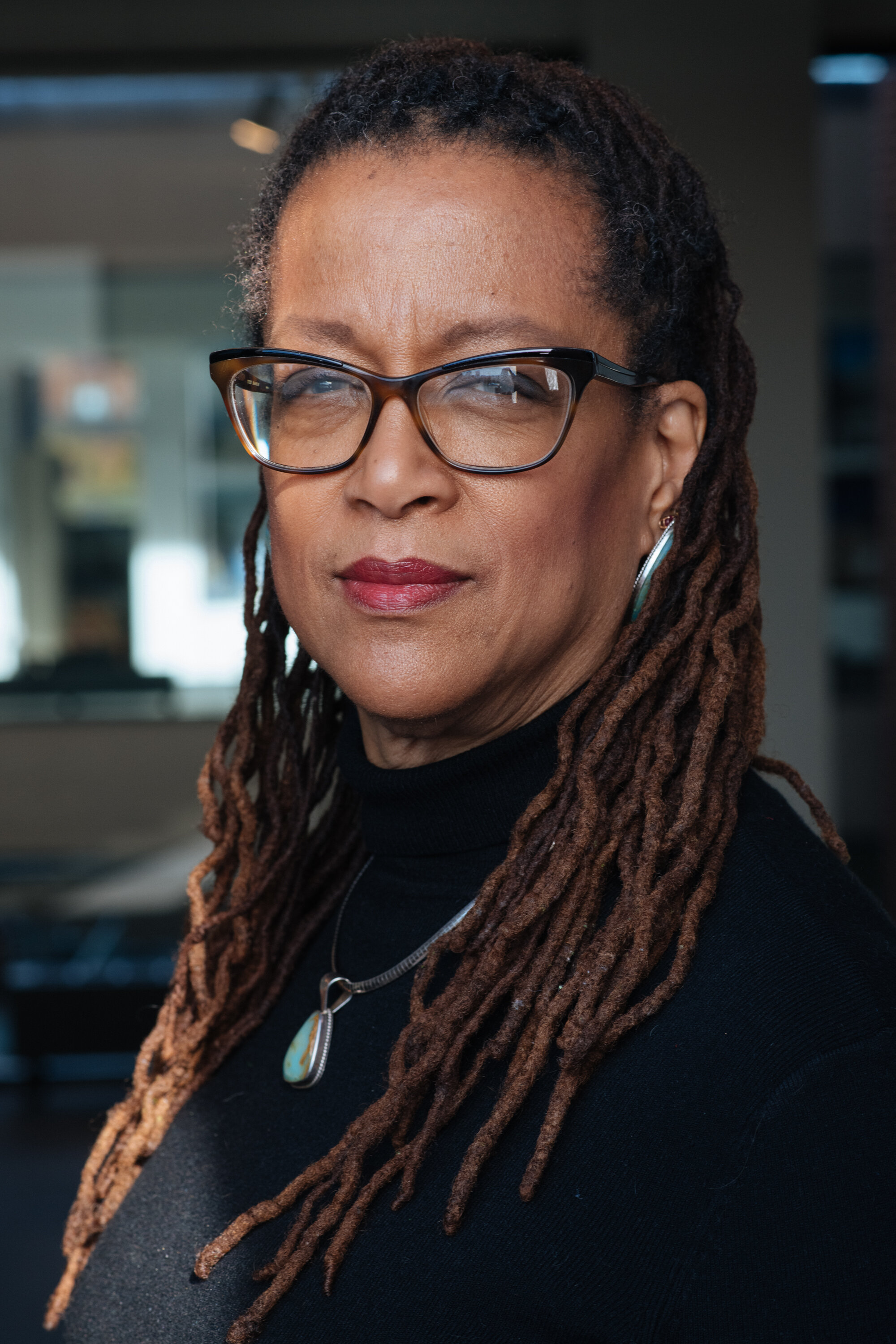‘I Was the 14th African-American Woman Architect in the U.S.’
Kathryn Tyler Prigmore, FAIA, LEED AP BD+C
Associate Director, Shalom Baranes Associates
1010 Wisconsin Ave NW, #900
Kathryn Prigmore was shocked to see herself in a 1985 issue of EBONY, listed as the 14th African-American woman registered to practice architecture in the United States. The groundbreaking distinction was never on her radar.
‘I didn’t go to a historically black college—I attended Rensselaer Polytechnic Institute in New York—so I wasn’t aware of the lack of diversity in the profession. I just went to school to be an architect. Seeing that article was a big surprise.’
Kathryn’s early years were spent in Queens, NY. Her childhood interest in architecture evolved from the many excursions with her family into Manhattan, where she watched in awe as new buildings took shape.
‘Some of my earliest memories are looking down into construction sites, into the holes back then, and seeing the buildings being built over time. The process was always fascinating to me.’
In 1965, her family relocated to Alexandria. There she had access to the city’s massive architectural library and every related magazine in circulation. Kathryn began drawing her own buildings, and spent her middle and high school years holed up in the library, devouring every architectural book she could find.
By 1982, the Rensselaer graduate was back in DC as a registered architect. The following year, she was invited to the first conference of African-American women architects, where she began to realize the significance of her role in the field. The EBONY article confirmed it.
Kathryn thrived as a young architect, working on ‘phenomenal projects’ like The Carlye Group headquarters at 1001 Pennsylvania Avenue, and loved practicing as much as she dreamed she would.
Many took note, including Howard University’s Dean of Students, who’d been following Kathryn’s early career. He offered her a teaching position, and spent the next eight years convincing her to accept.
Eventually she agreed, teaching for 13 years, and serving as Associate Dean of Howard University’s School of Architecture and Planning/Design for eight years.
‘I was hesitant to do it because I really loved practicing architecture. I do miss teaching, but that cliché of being in academia and losing sight of reality—you really do. I’ve been able to have more impact outside of academia than I had when I was in it.’
Today, Kathryn is Associate Director at Shalom Baranes Associates, a Georgetown firm where she specializes in designing buildings for the Federal Government. She’s currently working on a headquarters building that’s relocating from DC to Maryland—an extremely technical project type that she happens to love.
‘I like these projects because most of the time, the people working in the buildings have been in facilities that haven’t been renovated in a very long time. I enjoy helping them understand the kinds of spaces they’ll be going into, the technologies they’ll be able to use, and then to see them after they’ve moved in and how much better their working space is from what they left.’
Through this project, and past work on the Pentagon and other Homeland Security buildings, Kathryn has found a higher calling.
‘I see the type of architecture I practice as service to the country. There’s not many things you can do as an architect to serve the country without going into the [U.S. Army] Corps of Engineers. For me it’s a service and a responsibility, as much as practicing architecture.’
Service has shaped many aspects of Kathryn’s career, including the work within her community. In 2005, she became the founding collaborator of Riding the Vortex: African-American Women Architects in Practice.
The mentorship program was born of a problem, as most great things are.
‘It started because a dear friend of mine, Howard faculty member Barbara Laurie, wanted to get tenure, and I was advising her on things she could do to support her package. Around that same time, the director of the Directory of African-American Architects contacted me and said, ‘There are about 175 African-American women architects—what are you going to do about it?’ That’s where it all started. We had this challenge, and we came up with this mentoring program.’
Barbara passed away two years later, but her legacy lives on through Kathryn’s work. Today, there are nearly 500 African-American women architects—due, in large part, to the Vortex program.
Through professional conferences and seminars nationwide, female architects at varying career levels—from senior associate to intern—share their experiences as women and architects. Kathryn says the program increases exposure to the field, and encourages connections.
‘One goal of Vortex is to let people know there’s African-American women architects. Another is to give individuals who don’t normally have a voice the opportunity to speak at conferences. The way I got into speaking was someone who was already doing it asked me. You have to have those connections. When we present at the National Organization of Minority Architects conferences, it becomes a very intimate gathering of people who start sharing their stories in the session. Connections are made, not just with the speakers, but with people in the audience.’
Kathryn is particularly impressed with the younger generation of women architects who are ‘all over’ digital media, expanding a field that has already grown exponentially since Vortex first launched. She admits she only dabbles in the digital environment—having only ever drawn by hand as an architect—but finds the technological advancements and new career platforms fascinating.
She may be of the old school, but design wise, Kathryn is a modernist—easily frustrated by communities that don’t embrace modern architecture, and the ways in which it can add to one’s individual experiences.
‘I used to work in Old Town Alexandria, where all of the new buildings imitated the historic,’ says Kathryn, who counts the LEED-certified Institute of Peace among her favorite buildings in DC. ‘I call the style ‘oldy towny phony colony.’ I wish there was a way we could educate the public more so they appreciate the modern insertions into the historic fabric, like they do in Europe. Georgetown’s insertions—many designed by our firm—are much better. Regionally, Arlington is doing a great job of using historic materials in modern forms and expressions on larger buildings.’
Growing up studying and comparing Alexandria and Georgetown’s architecture, long before she worked in either neighborhood, Kathryn feels like she’s come full circle.
‘As someone who was attuned to the built environment since I was very young, I’d take the bus and be in Georgetown in 15 minutes, studying these buildings informally. My fondest memories of Georgetown are walking around when I was younger and experiencing the complexity of its fabric, and that’s what I still love about it today. When I come to work I’m in an office, but it’s the journey to the office—and the views from it—that inspire me.’
